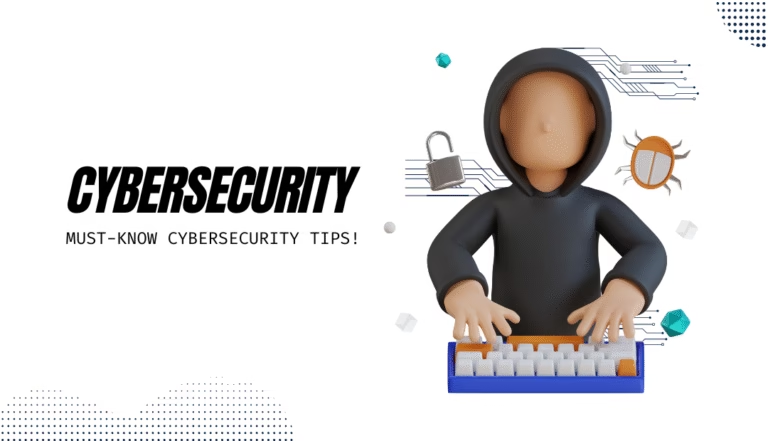Understanding the Importance of Cloud Security in 2024

Cloud security has become increasingly important in today’s digital age as more and more businesses are shifting their operations to the cloud. With the vast amount of sensitive data being stored and processed in the cloud, ensuring that this data is secure and protected from cyber threats is essential.
In 2024, the importance of cloud security has only grown as cyber attacks become more sophisticated and prevalent. With the rise of remote work and reliance on cloud-based technologies, the need for strong security measures to protect data has never been greater.
1. Data Breaches:
Data breaches can have serious consequences for businesses, including financial loss, damage to reputation, and legal repercussions. In the cloud, sensitive data is stored and accessed from various locations, making it vulnerable to breaches if proper security measures are not in place.
2. Compliance Requirements:
Many industries have strict regulations and compliance requirements for data security, such as GDPR and HIPAA. Failure to comply with these regulations can result in costly fines and penalties. Ensuring that data stored in the cloud is secure and compliant with regulatory standards is essential in 2024.
3. Cyber Threats:
Cyber threats continue to evolve and become more sophisticated, making it challenging for businesses to stay ahead of potential security breaches. Cloud security solutions, such as encryption, authentication, and monitoring, are crucial in protecting data from these threats.
4. Remote Work:
The increase in remote work has made cloud security even more important as employees access company data from various locations and devices. Ensuring that remote access to cloud resources is secure and controlled is essential in maintaining data security in 2024.
5. Business Continuity:
In the event of a security breach or data loss, having strong cloud security measures in place can help businesses recover quickly and minimize disruption to operations. Regular backups, disaster recovery plans, and encryption can all help ensure business continuity in the face of potential security threats.
Best Practices for Mastering Cloud Security

1. Implement a comprehensive security strategy:
Develop a clear security strategy that covers all aspects of cloud security, including access controls, data encryption, threat detection, and incident response.
2. Secure data at rest and in transit:
Use encryption to protect data both when it is stored in the cloud and when it is being transmitted between devices and servers. Make sure to use strong encryption standards and regularly update encryption keys.
3. Use multi-factor authentication:
Require users to use multiple methods of authentication, such as a password and a one-time code sent to their phone, to access cloud resources. This adds an extra layer of security and makes it harder for attackers to gain unauthorized access.
4. Monitor and analyze cloud activity:
Utilize security monitoring tools to track user activity, detect anomalous behavior, and identify potential security threats in real-time. Regularly review logs and reports to stay on top of security incidents.
5. Regularly update and patch software:
Keep all software and applications up-to-date with the latest security patches and updates to protect against known vulnerabilities. Set up a schedule for regular maintenance and security updates.
6. Train employees on security best practices:
Provide comprehensive training for all employees on how to securely use cloud resources, recognize phishing attempts, and respond to security incidents. Educate users on the importance of strong passwords, data encryption, and safe online practices.
7. Implement access controls:
Use role-based access controls to restrict access to sensitive data and resources to only those who need it. Regularly review and update user permissions to ensure that only authorized users can access critical systems and data.
8. Back up data regularly:
Create regular backups of all critical data and store them in a secure, off-site location. This will ensure that you can recover your data in the event of a security breach or data loss incident.
9. Conduct regular security audits:
Perform regular security audits and assessments to identify vulnerabilities, assess security controls, and ensure compliance with industry standards and regulations. Use the results of these audits to make improvements to your cloud security strategy.
10. Stay informed about emerging threats:
Stay up-to-date on the latest security threats and trends in cloud security by monitoring industry news, attending security conferences, and participating in security forums. Adapt your security strategy as needed to protect against new and evolving threats.
Mastering Cloud Security Posture Management

Cloud Security Posture Management (CSPM) is a critical aspect of maintaining the security of your cloud environment. With the increasing use of cloud services and the growing number of cyber threats, it is important to ensure that your cloud infrastructure is secure and compliant with industry best practices.
1. Assess your cloud security posture:
Start by assessing your current cloud security posture to identify any gaps or vulnerabilities in your environment. This can be done through security assessments, audits, and compliance checks.
2. Implement automated security controls:
Use automation tools to enforce security controls and policies across your cloud environment. This can help ensure consistency and reduce the risk of human error.
3. Monitor and respond to security incidents:
Implement a robust monitoring and alerting system to detect and respond to security incidents in real-time. This can help you identify and mitigate security threats before they escalate.
4. Regularly update and patch your cloud infrastructure:
Keep your cloud infrastructure up to date by regularly applying security patches and updates. This can help protect your environment from known vulnerabilities.
5. Train your team on cloud security best practices:
Educate your team on the importance of cloud security and provide training on best practices for securing your cloud environment. This can help ensure that everyone in your organization is aware of their responsibilities when it comes to cloud security.
6. Implement access controls and encryption:
Use strong access controls and encryption to protect sensitive data and prevent unauthorized access to your cloud resources. This can help prevent data breaches and ensure compliance with regulations such as GDPR and HIPAA.
Integrating Cloud Cost Management in Your Security Posture

Cloud cost management is an essential component of your overall security posture as it helps you avoid financial risks associated with cloud services. By actively monitoring and optimizing your cloud spending, you can prevent budget overruns, eliminate wasteful spending, and ensure that resources are being used efficiently.
1. Implement cost management tools:
Use specialized tools that provide real-time cost tracking, budget optimization, and cost forecasting to help you effectively manage your cloud spending. These tools can also help you identify cost anomalies or irregularities that may indicate a security breach.
2. Establish a cost accountability framework:
Assign responsibility for monitoring and managing cloud costs to specific individuals or teams within your organization. This ensures that cost management is a priority and helps prevent unauthorized or unnecessary spending.
3. Conduct regular cost reviews:
Schedule regular reviews of your cloud spending to identify areas where costs can be reduced or optimized. Look for unused resources, oversized instances, or inefficient workloads that can be adjusted to save money.
4. Monitor security implications of cost decisions:
Consider the security implications of cost-saving measures, such as downsizing instances or reducing storage capacity. Ensure that cost optimization efforts do not compromise the security of your cloud environment.
5. Implement cloud governance policies:
Establish policies and guidelines for managing cloud costs that align with your overall security objectives. This can include controls for approving new cloud services, monitoring usage, and enforcing compliance with cost management policies.
Enhancing Security Measures in Google Cloud

Google Cloud offers a range of security features to help protect your data and applications. However, there are additional measures you can take to enhance security in Google Cloud:
1. Use multi-factor authentication (MFA) for added protection. By requiring users to enter a second form of authentication, such as a phone code or security key, you can significantly reduce the risk of unauthorized access.
2. Encrypt your data both at rest and in transit. Google Cloud offers encryption options for data stored in Cloud Storage, BigQuery, and Compute Engine. You can also use Cloud Key Management Service to manage encryption keys securely.
3. Implement role-based access control (RBAC) to limit user permissions based on their role in the organization. This helps prevent unauthorized users from accessing sensitive data or resources.
4. Monitor and audit activity in your Google Cloud environment using tools like Cloud Audit Logs and Cloud Monitoring. This can help you detect and respond to suspicious behavior or security threats.
5. Enable firewall rules and network security configurations to restrict access to your resources based on IP addresses, protocols, and ports. You can also use Cloud Armor to protect your applications from DDoS attacks.
6. Regularly update and patch your systems and applications to protect against known vulnerabilities. Google Cloud provides automated security patches for Compute Engine instances, but it is important to stay vigilant and apply updates promptly.
7. Implement a strong password policy and regularly rotate passwords to prevent unauthorized access. Consider using tools like Google Cloud Identity-Aware Proxy for secure authentication and authorization.










